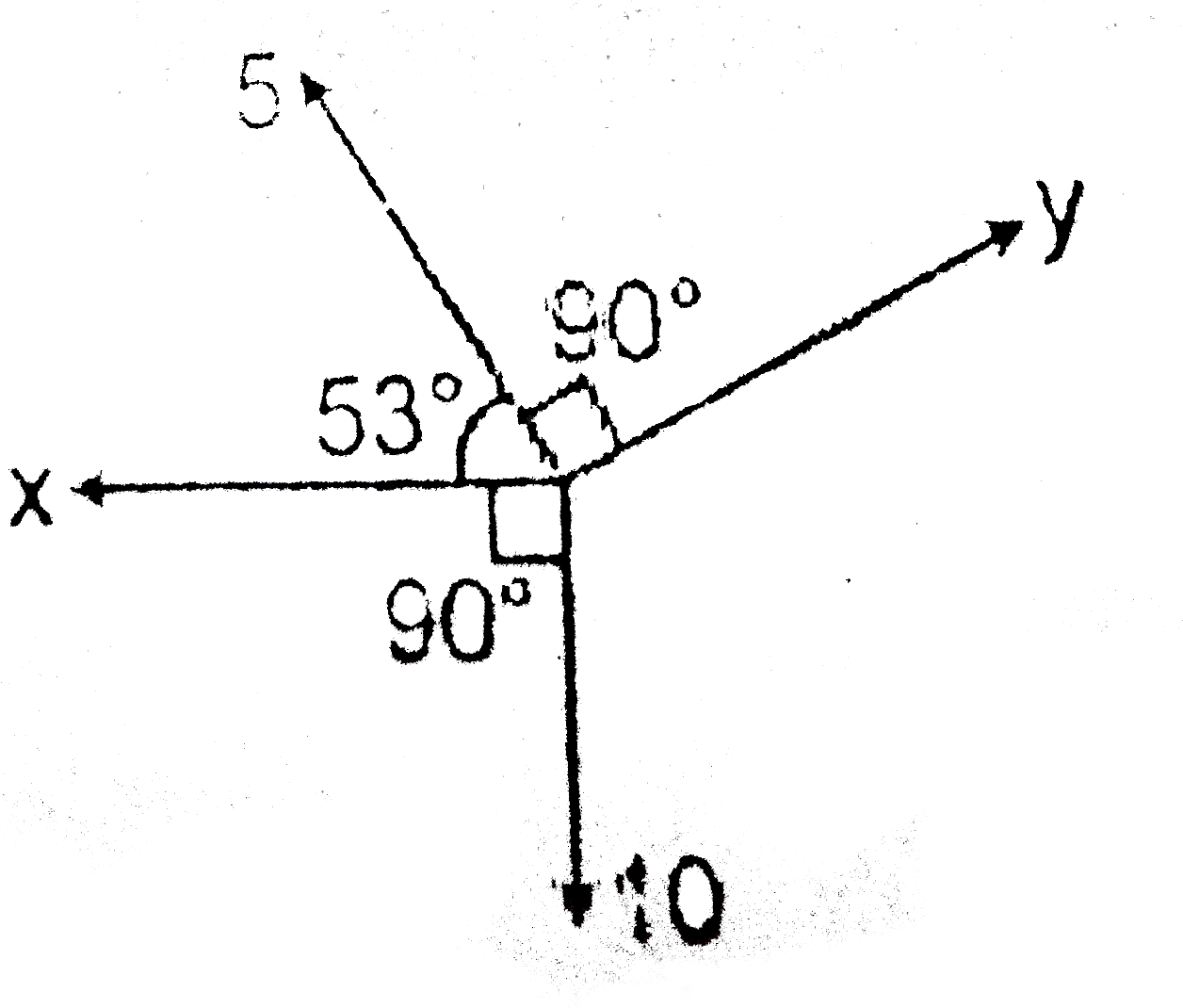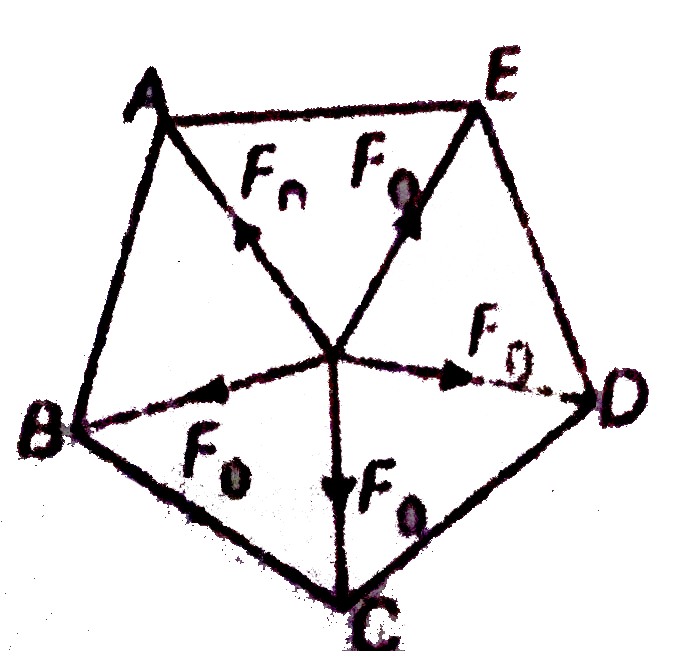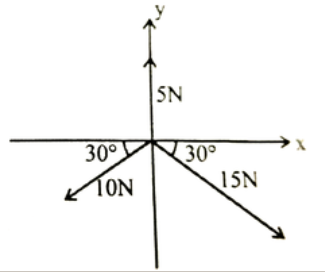Six forces are acting on a particle. Angle between two adjacent force is 60∘. Five of the forces have magnitude F1 and the sixth has magnitude F2. The resultant of all the forces will have magnitude of
zero
F1+F2
F1−F2
F2
The correct Answer is:C
To solve the problem, we need to analyze the forces acting on the particle step by step.
Step 1: Understand the Forces
We have six forces acting on a particle:
- Five forces have a magnitude of F1.
- One force has a magnitude of F2.
- The angle between any two adjacent forces is 60∘.
Step 2: Visualize the Forces
We can visualize the forces as follows:
- The five forces F1 are arranged in a circular pattern, each separated by an angle of 60∘.
- The sixth force F2 can be considered as acting in a specific direction (let's say along the x-axis for simplicity).
Step 3: Analyze the Arrangement
Since the forces F1 are evenly spaced at 60∘, we can see that they will have symmetrical components. The resultant of these five forces can be calculated by considering their vector sum.
Step 4: Calculate the Resultant of the Five Forces
The resultant R1 of the five forces F1 can be calculated using the formula for the resultant of forces at equal angles:
R1=n⋅F⋅cos(θ2)
where n is the number of forces, F is the magnitude of each force, and θ is the angle between them.
In our case:
- n=5
- F=F1
- θ=60∘
Thus,
R1=5⋅F1⋅cos(30∘)=5⋅F1⋅√32=5√32F1
Step 5: Consider the Sixth Force
Now, we have the resultant R1 acting in one direction and the sixth force F2 acting in the opposite direction.
Step 6: Calculate the Final Resultant
The final resultant R of all the forces can be calculated as:
R=R1−F2
Substituting the value of R1:
R=5√32F1−F2
Conclusion
Thus, the magnitude of the resultant of all the forces acting on the particle is:
R=5√32F1−F2
We have six forces acting on a particle:
- Five forces have a magnitude of F1.
- One force has a magnitude of F2.
- The angle between any two adjacent forces is 60∘.
We can visualize the forces as follows:
- The five forces F1 are arranged in a circular pattern, each separated by an angle of 60∘.
- The sixth force F2 can be considered as acting in a specific direction (let's say along the x-axis for simplicity).
Since the forces F1 are evenly spaced at 60∘, we can see that they will have symmetrical components. The resultant of these five forces can be calculated by considering their vector sum.
The resultant R1 of the five forces F1 can be calculated using the formula for the resultant of forces at equal angles:
R1=n⋅F⋅cos(θ2)
where n is the number of forces, F is the magnitude of each force, and θ is the angle between them.
- n=5
- F=F1
- θ=60∘
R1=5⋅F1⋅cos(30∘)=5⋅F1⋅√32=5√32F1
Now, we have the resultant R1 acting in one direction and the sixth force F2 acting in the opposite direction.
The final resultant R of all the forces can be calculated as:
R=R1−F2
Substituting the value of R1:
R=5√32F1−F2
Thus, the magnitude of the resultant of all the forces acting on the particle is:
R=5√32F1−F2
Similar Questions
Knowledge Check
Two forces each of magnitude 2N, act at an angle of 60∘. The magnitude of the resultant force
A√1.1 NewtonB√4 NewtonC√12 NewtonD√14.9 Newton
Two forces, each of magnitude F have a resultant of the same magnitude F. The angle between the two forces is
View SolutionTwo forces with equal magnitudes F act on a body and the magnitude of the resultant force is F /3. The angle between the two forces is
View SolutionFour forces are acting on a body as shown in figure. The magnitude of resultant of the forces is
View SolutionIf the resultant of the two forces has a magnitude smalle than the magnitude of larger force,the two forces must be
View SolutionThe resultant of two forces has magnitude 20N. One of the forces is of magnitude 20√3N and makes an angle of 30∘ with the resultant. Then what is the magnitude of the other force?
View SolutionFind the magnitude of the unknown forces X and Y if sum of all forces is zero.

View SolutionIn the given figure O is the centre of regular pentagon ABCDE. Five forces each of magnitude F0 are acted as shown in figure. The resultant force is

View Solution


